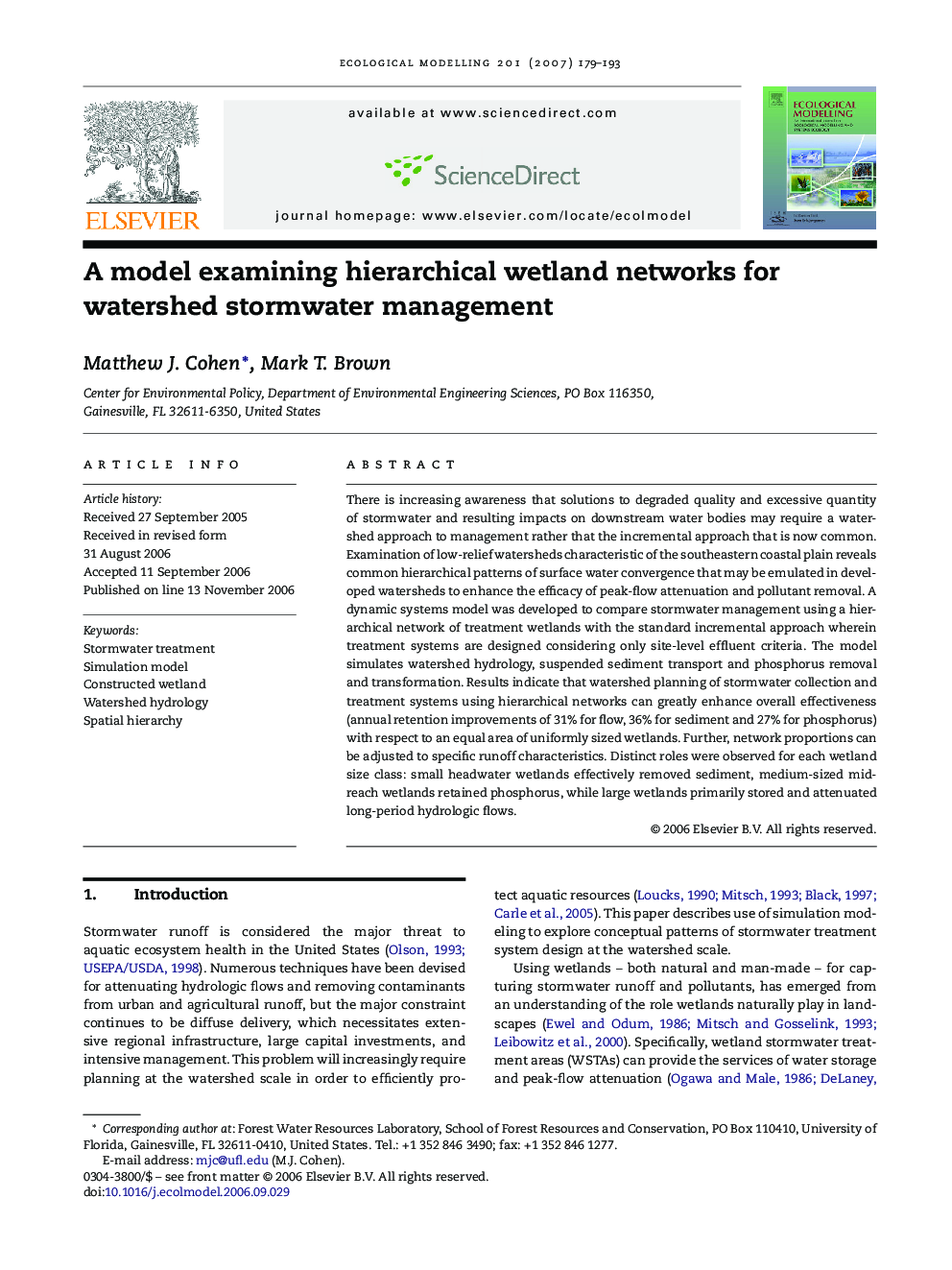| Article ID | Journal | Published Year | Pages | File Type |
|---|---|---|---|---|
| 4378778 | Ecological Modelling | 2007 | 15 Pages |
There is increasing awareness that solutions to degraded quality and excessive quantity of stormwater and resulting impacts on downstream water bodies may require a watershed approach to management rather that the incremental approach that is now common. Examination of low-relief watersheds characteristic of the southeastern coastal plain reveals common hierarchical patterns of surface water convergence that may be emulated in developed watersheds to enhance the efficacy of peak-flow attenuation and pollutant removal. A dynamic systems model was developed to compare stormwater management using a hierarchical network of treatment wetlands with the standard incremental approach wherein treatment systems are designed considering only site-level effluent criteria. The model simulates watershed hydrology, suspended sediment transport and phosphorus removal and transformation. Results indicate that watershed planning of stormwater collection and treatment systems using hierarchical networks can greatly enhance overall effectiveness (annual retention improvements of 31% for flow, 36% for sediment and 27% for phosphorus) with respect to an equal area of uniformly sized wetlands. Further, network proportions can be adjusted to specific runoff characteristics. Distinct roles were observed for each wetland size class: small headwater wetlands effectively removed sediment, medium-sized mid-reach wetlands retained phosphorus, while large wetlands primarily stored and attenuated long-period hydrologic flows.
